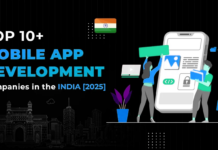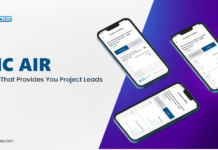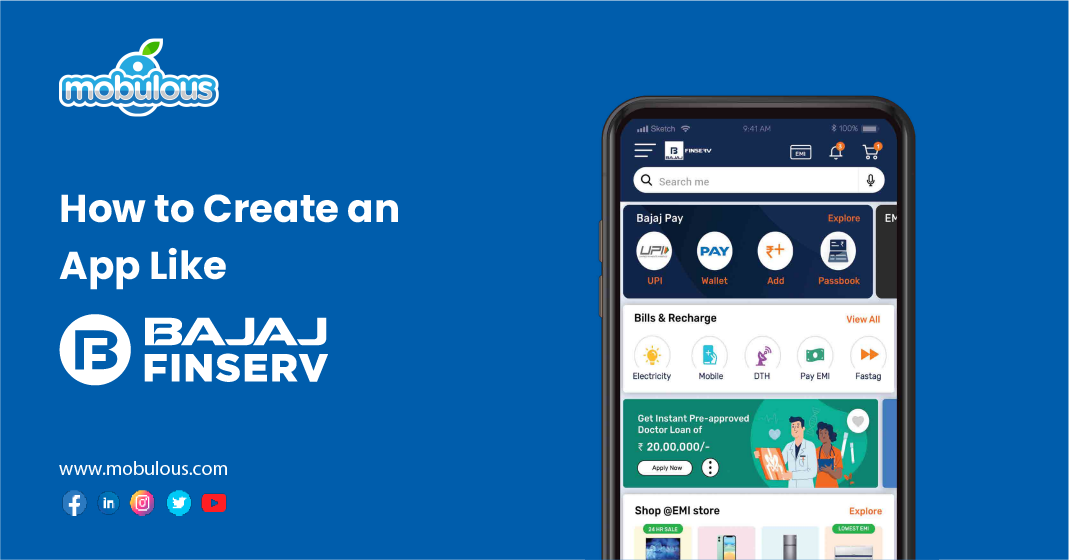How to Create an App Like Bajaj Finserv App
How to create an app like Bajaj Finserv app has become everyone’s concern nowadays because of the robust requirements of a financial application in everyone’s lives, for both bankers and common people.
Creating an application like Bajaj Finserv requires an advanced understanding of its key functionality, user experience design, and technical architecture. Financial applications like Bajaj Finserv have redefined how users access credit, pay EMIs, manage investments, and even shop online.
If you are curious about how to create an app like Bajaj Finserv app, then you’ve landed at the right place. Let’s move ahead and explore the key components, tech stack, and implementation strategies required to create your own fintech solution that offers similar functionality while maintaining security and delivering a unique user experience.
For Query:- Seek Guidance From a Mobile App Development Company!
What is Bajaj Finserv App?
The Bajaj Finserv app is an expensive financial services platform that acts as a one-stop solution for diverse financial necessities. It basically offers users access to loans, digital EMI cards, insurance products, a digital wallet for seamless transactions, bill payments, and investment options.
The application incorporates multiple financial services under a single interface that provides personalized offers and financial management tools while ensuring secure and safe transactions through highly advanced encryption technology.
For Query:- Seek Help From a Top Fintech App Development Company!
Why Bajaj Finserv is Important?
Bajaj Finserv has revolutionized financial services in India by bringing various products onto a single digital platform. It streamlines complex financial processes that make them accessible to millions through its user-friendly interface.
The app’s importance lies in its ability to democratize financial services, offer quick approvals, provide paperless transactions, and deliver personalized recommendations depending on user profiles and their behaviors.
For Guidance:- Contact a Banking and Finance App Development Company!
How to Create an App Like Bajaj Finserv App?
Creating a successful fintech app like Bajaj Finserv application simply requires careful planning, attention to user needs, and app development expertise. The following points will help you understand how to create a robust Bajaj Finserv clone app that delivers advanced value to users while meeting financial industry standards:
Also Read:- How to Create an E-Wallet App Like Google Pay?
1. Market Research & Planning
Start your journey in order to create an app like Bajaj Finserv with thorough market research. Examine competitor NBFC apps, demonstrate your exceptional value proposition, and identify user pain points.
Make a comprehensive business plan and outline monetization strategies, target demographics, and compliance requirements. This foundation ensures your finance app development, like Bajaj Finserv, addresses genuine market necessities while positioning you competitively.
2. Wireframing and Prototyping
Transform your vision into immersive prototypes before jumping into the development process. Create low-fidelity wireframes mapping user journeys for loan apps, account management, and payment flows.
Create clickable prototypes in order to test user interactions across key functions. This essential step in Android finance app development and iOS fintech app development saves resources by validating concepts early.
For Query:- Seek Help From an iOS App Development/Android App Development Company!
3. Designing the UI/UX
Design a user-friendly and highly intuitive interface that balances functionality with simplicity, essential for banking and finance app development. Build a consistent visual language with clear navigation, informative feedback mechanisms, and accessibility features.
Focus on financial transparency through clean visualizations and dashboards. User-centric design significantly affects adoption rates when you build an app like Bajaj Finserv.
For Assistance: Hire a UI/UX Designer!
4. Choosing the Right Tech Stack
Select the most suitable technologies for your NBFC app like Bajaj Finserv app, considering security, scalability, and performance. For mobile platforms, select native app development (Kotlin/Swift) or cross-platform frameworks like React Native or Flutter.
Backend infrastructure might use NodeJS, Java, or Python paired with highly safe and secure databases. Your decision for the best tech stack directly affects the development speed and long-term maintenance costs.
Also Read:- What is the Importance of Java Programming Language?
5. Integrating the Robust Features
Enforce key financial capabilities needed to create a Bajaj Finserv clone app, such as digital payments, loan management, document management, and portfolio tracking.
Include crucial security features like biometric authentication, fraud detection, and encryption. Personalized recommendations and financial planning tools improve user engagement, thus making your money app development project stay ahead of the competitive curve.
6. Frontend and Backend Development
Carry out frontend development with highly responsive interfaces for both iOS fintech app development and Android finance app development. Develop an advanced backend architecture that supports user management, financial transactions, and data analytics.
Enforce secure performance monitoring, API gateways, and regulatory compliance mechanisms. This foundation supports advanced operations crucial for financial services and loan app development.
Also Read:- FinTech App Development Cost!
7. API Integration
Connect your app to crucial financial services through secure API integrations. Enforce credit bureaus, payment gateways, banking interfaces, and KYC verification.
When you create an app like Bajaj Finserv app, these integrations allow real-time processing of loans, insurance purchases, and investments. Focus on secure data exchange with consistent monitoring and proper authentication in order to protect and safeguard financial information.
8. Testing and QA
Enforce meticulous testing protocols across all app components. Conduct functional testing in order to verify financial calculations and transaction processing. Perform security audits, load testing, and penetration testing in order to ensure reliability under pressure.
User acceptance testing with real financial scenarios is highly important in banking and finance app development in order to identify usability issues before app launch.
9. App Launch and Deployment
Prepare a strategic deployment plan for your NBFC app like Bajaj Finserv app. Complete store submissions with optimized listings and compelling screenshots. Enforce analytics tracking from day one, and prepare for phased rollouts.
Build marketing materials that outline your app’s exceptional financial features. A well-implemented launch strategy accelerates user acquisition and provides valuable feedback for future finance app development like Bajaj Finserv iterations.
10. Maintenance & Support
Set up ongoing maintenance protocols after initial app launch and deployment. Enforce regular security updates, performance optimizations, and feature improvements. Deploy monitoring tools in order to track user engagement and financial transaction success rates.
Provide responsive customer support through multiple channels. Consistent enhancement is essential when you create a Bajaj Finserv clone app in order to maintain user trust and regulatory compliance.
Compliance and Security Adherence in the App Like Bajaj Finserv App
Building a secure financial app requires complying with regulatory standards and implementing robust security measures. The following security functionalities are vital for creating a fintech app like Bajaj Finserv that handles and manages financial data and transactions:
For Assistance:- Seek Help from an eWallet App Development Company!
1. PCI DSS Compliance
Payment Card Industry Data Security (PCI DSS) compliance is essential for fintech applications processing card payments. This framework needs to enforce secure networks, access control measures, encryption protocols, and regular security testing.
Complying with these standards safeguards cardholder data, shields your business from possible legal liabilities, builds customer trust, and avoids financial penalties that can result from security incidents and data breaches.
2. Data Encryption
Enforcing comprehensive encryption ensures that confidential financial data and information remain secure and protected during transmission and storage. This simply includes encrypting personal details, authentication credentials, and transaction data by leveraging robust algorithms like AES-256.
A multi-layered encryption approach with proper key management policies protects user data from unauthorized access and cyber threats, maintaining confidentiality even if other security measures are compromised.
Also Read:- How AI-Driven Development is Transforming the Software Development Lifecycle (SDLC)?
3. Two-Factor Authentication
Two-factor authentication adds a vital security layer by requiring users to verify their identity via multiple methods before accessing financial services.
Beyond passwords, this generally includes biometric verification (face recognition/fingerprint sensor), one-time passwords (OTPs) through SMS/email, or hardware tokens.
This substantially reduces the risk of unauthorized access, even if login credentials are compromised, thus safeguarding users from account takeovers and fraudulent transactions.
Also Read:- TechFin vs Fintech: The Future of Finance is Here!
Essential Features to Include in an App Like Bajaj Finserv App
Creating a comprehensive financial services application requires careful consideration of user necessities and administrative capabilities. The crucial features to include when creating a fintech app similar to Bajaj Finserv app are mentioned below:
User Panel Features
These features empower users to manage and handle their financial needs independently through a secure and immersive interface, improving user experience and platform engagement.
Also Read:- Big Data Analytics — What is it? Four V’s, Technologies, Industries, & Why it Matters in 2025?
1. Easy Registration/Login
This feature simplifies user onboarding through robust registration forms with social media integration options. Multi-factor authentication ensures account security while maintaining a user-friendly interface.
Progressive KYC enables basic functionality with minimal information that promotes quick platform engagement while building trust through transparent data collection.
2. Account Dashboard
The account dashboard provides an end-to-end financial overview with tailored widgets displaying account balances, available credit, upcoming EMIs, and investment performance.
Color-coded indicators help users quickly examine their financial health, while interactive charts illustrate spending patterns and financial progress against personalized goals over selected time periods.
3. Loan Application & Status Tracking
Loan application and status tracking is a feature that allows paperless loan applications with document upload functionality and digital signature capabilities. Real-time status tracking with progress indicators keeps users updated and informed through each approval stage.
Integrated eligibility checks and quick pre-approval notifications make the borrowing process transparent and minimize application anxiety.
4. EMI Calculator
This feature helps users make informed financial decisions by calculating monthly payment obligations for diverse loan amounts, tenure combinations, and interest rates.
Interactive sliders enable users to visualize how adjusting different parameters affects repayment schedules. Personalized affordability indicators outline optimal borrowing options based on the user’s income profile.
5. Wallet & Payments
Wallet and payment feature centralizes financial transactions via a secure digital wallet supporting multiple payment modes such as UPI, net banking, and cards.
QR code scanning allows for quick merchant payments, while scheduled payments automate recurring expenses. Integrated rewards systems incentivize digital transactions with cashback and loyalty points on every transaction.
6. Transaction History
Transaction history is a feature that delivers comprehensive financial records with advanced filtering capabilities by date, payment method, and category. Smart categorization automatically organizes expenses for enhanced financial tracking.
Downloadable statements in diverse formats support personal record-keeping and tax preparation, while transaction search functionality allows for quick access to specific entries.
7. Notifications & Alerts
Notification and alerts keeps users informed through customizable push notifications for payment reminders, security events, and offer alerts. Time-sensitive notifications for due dates prevent late fees and missed payments.
Intelligent and savvy alert systems detect unusual account activity and notify users quickly, thus improving security while providing peace of mind.
Admin Panel Features
Admin panel features provide administrators with powerful tools in order to manage and handle users, ensure regulatory compliance, and monitor platform health through a centralized interface. Below are the robust features that an admin panel consists of:
1. User Management
User management allows advanced user oversight with detailed profile views and segmentation tools depending on financial behavior and activity levels. Administrative controls enable account suspension, access level modifications, and verification status management.
Search functionality with complex filters helps identify specific users quickly when addressing inquiries or monitoring suspicious activity.
2. Loan Management
Loan management centralizes loan portfolio administration with approval workflows, disbursement controls, and documentation verification. Risk evaluation dashboards outline potential defaulters depending on payment patterns.
Administrative tools allow for tenure modifications, interest rate adjustments, and special payment arrangements in order to accommodate changing economic conditions or hardship cases.
3. KYC Verification
KYC verification is a feature that simplifies identity verification through automated document processing with OCR technology for extracting and validating personal data and information. Manual review queues focus on cases requiring human intervention.
Verification status tracking simply ensures transparency throughout the procedure, while compliance dashboards monitor verification metrics against regulatory necessities.
4. Notifications Control
This feature allows for centralized communication management with template development tools and scheduled broadcast capabilities. Segmentation options enable targeted messaging depending on user demographics and behavior patterns.
Performance analytics track message delivery, user engagement metrics, and open rates in order to optimize communication strategies and enhance response rates.
5. Report Generation
The report generation feature delivers actionable insights through tailored reports on financial transactions, user acquisition, and platform performance. Scheduled report generation automates data delivery to stakeholders at defined intervals.
Export functionality in various formats supports integration with external systems, while interactive visualization tools help identify trends and anomalies requiring utmost attention.
Advanced Features to Add
These features utilize advanced technologies in order to improve user experience, operational efficiency, and differentiate your app in today’s competitive financial landscape. The advanced features that you must consider incorporating into your app are given below:
1. AI-Based Loan Eligibility Check
AI-based loan eligibility checks leverage machine learning algorithms in order to evaluate creditworthiness beyond traditional scoring methods by examining transaction patterns and financial behavior.
Real-time eligibility predictions with confidence scores help users understand approval likelihood before applying. Personalized enhancement suggestions guide users toward better financial habits that can enhance their future loan terms.
2. Chatbot Integration
Chatbot integration provides 24/7 automated assistance via NLP or Natural Language Processing capabilities that comprehend and respond to financial queries. Guided workflows help users complete sophisticated processes like loan apps step-by-step.
Smooth handover to human agents ensures continuity when conversations require specialized expertise, while consistent learning enhances response accuracy over time.
3. Multi-Language Support
This feature breaks communication barriers by offering interface options in regional languages with culturally suitable terminology. Dynamic content translation maintains a continuous user experience across language preferences.
Language detection capabilities automatically suggest advanced language options as per the user’s location and device settings. This makes financial and fintech services highly accessible to diverse linguistic communities.
4. Biometric Login
Biometric login improves security while enhancing accessibility through facial recognition, voice authentication, and fingerprint options. Adaptive security protocols balance protection with convenience depending on transaction risk levels.
Cross-device synchronization ensures continuous authentication experiences regardless of how users access their accounts, eradicating password fatigue without compromising security.
5. In-App Support
In-app support is a feature that delivers quick assistance through multiple channels such as video calls, live chat, and screen sharing capabilities. Contextual help resources expect user requirements depending on the current activities within the app.
Ticket tracking with status updates ensures issue resolution transparency, while feedback collection after support interactions assists in enhancing the service quality consistently.
The Right Technology Stack For Creating an App Like Bajaj Finserv App
In order to create an app like Bajaj Finserv app, which is a financial services application, offering loans, insurance, investments, payments, and various other options, you need a robust and highly secure technology stack for creating a similar app:
1. Frontend (Client-Side) Development
This is what users interact with directly. So, it means it is primarily required to be developed with utmost focus and care:
Mobile Platforms:
- Android: Java or Kotlin
- iOS: Swift or Objective-C
- Cross-Platform (Optional): Flutter, React Native (for faster development and code sharing)
Key Tools & Frameworks:
- Flutter or React Native (for consistent UI across platforms)
- Jetpack Compose (for Android UI)
- SwiftUI (for iOS UI)
2. Backend (Server-Side) Development
Handles the business logic, data processing, and system integrations.
Languages & Frameworks:
- Node.js (JavaScript/TypeScript)
- Python with Django or Flask
- Java with Spring Boot
- .NET (C#) – ideal for enterprise-grade financial apps
Also Read:- Enterprise Mobile App Development Trends (IoT, Blockchain, 5G)!
Databases:
- Relational: PostgreSQL, MySQL – for storing user and transaction data
- NoSQL: MongoDB – for flexible data models
- Cloud Databases: Amazon RDS, Firebase Realtime DB
3. APIs & Integration
To connect with financial services, third-party APIs, and banking networks.
- Payment Gateways: Razorpay, PayU, Stripe, or Paytm
- KYC/AML Verification: Signzy, IDfy, Onfido
- Credit Score APIs: Experian, CIBIL, CRIF
- SMS/Email Services: Twilio, SendGrid, AWS SES
4. Security Stack
Highly critical for a financial services app.
- Data Encryption: AES-256, SSL/TLS
- Authentication: OAuth 2.0, JWT (JSON Web Tokens), Multi-Factor Authentication (MFA)
- Compliance: PCI-DSS, GDPR, RBI Guidelines (for India)
- Security Tools: Firebase App Check, Mobile Device Management (MDM) integrations
5. Cloud & DevOps
To ensure scalability, continuous deployment, and performance.
- Cloud Platforms: AWS, Google Cloud Platform (GCP), Microsoft Azure
- CI/CD Tools: Jenkins, GitHub Actions, GitLab CI
- Containerization: Docker, Kubernetes (for microservices)
- Monitoring: Datadog, New Relic, Prometheus
6. Analytics & Engagement
Track user behavior, push engagement, and optimize performance.
- Analytics Tools: Google Analytics for Firebase, Mixpanel, Amplitude
- Push Notifications: Firebase Cloud Messaging (FCM), OneSignal
- In-app Messaging & Chatbots: Drift, Intercom, Kommunicate
7. Admin Dashboard / CRM
For customer support, loan management, and analytics.
- Frameworks: Angular, React, Vue.js
- Backend Integration: RESTful APIs or GraphQL
- Tools: Strapi, Directus, or custom-built dashboard
8. Additional Features to Consider
- AI/ML Modules: For credit risk assessment, fraud detection, and personalized offers.
- Voice Assistant Integration: Google Assistant, Alexa Skills.
- Offline Mode: Using local storage like SQLite or Room (Android).
For Assistance:- Seek Help from an AI/ML App Development Company!
How Much Does it Cost to Create an App Like Bajaj Finserv App?
Creating an app like Bajaj Finserv app generally costs between USD 20,000 to USD 200,000 based on feature set and complexity level.
Basic versions with vital financial functions start around USD 20,000 to USD 50,000. Mid-range apps with advanced features like digital wallets and loan processing range from USD 50,000 to USD 75,000. Enterprise-level or highly advanced apps with complex features, AI capabilities, full compliance implementation, and comprehensive security measures may exceed USD 200,000.
Multiple factors influencing cost include the platform selection (iOS/Android/both), security implementations, feature integration, third-party API integrations, and ongoing maintenance requirements. App development location also substantially affects pricing, with offshore teams usually providing cost benefits.
The Takeaway
In order to create an app like Bajaj Finserv app, you need meticulous planning, consistent refinement, and technical expertise. By following this step-by-step process mentioned above, app developers are able to create a secure and feature-rich financial app that meets regulatory necessities while delivering a robust user experience.
Remember that success highly depends on not only technical implementation but also on comprehending user requirements and financial market dynamics. With the best methodology and Agile approach, your fintech solution can become an indispensable financial companion for your users.
FAQ’s — How to Create an App Like Bajaj Finserv App?
Q. What are the essential features required for a Bajaj Finserv-like app?
Ans. Essential features include secure user authentication, loan application processing, EMI calculator, digital wallet functionality, payment integration, account dashboard, transaction history, document management system, and notification alerts. Advanced features like AI-based credit scoring, chatbot support, and biometric login enhance user experience and security while providing competitive advantages.
Q. How long does it take to develop an app like Bajaj Finserv?
Ans. App development like Bajaj Finserv app typically takes 6 to 9 months for a comprehensive solution. The timeline includes 4 to 6 weeks for planning and design, 3 to 4 months for core development, 4 to 6 weeks for testing and refinement, and 2 to 3 weeks for deployment. Complex features, compliance requirements, or integration challenges can extend this timeline.
Q. What compliance regulations must be considered when developing a fintech app?
Ans. Key regulations include PCI DSS for payment handling, data protection laws (GDPR/local equivalents), KYC/AML regulations, financial service authority requirements, and sector-specific lending regulations. Working with legal experts familiar with fintech compliance is essential to navigate these complex requirements and avoid costly penalties or operational disruptions.
Q. How can I ensure my fintech app is secure against cyber threats?
Ans. Implement end-to-end encryption, multi-factor authentication, biometric verification, and secure API protocols. Regular security audits, penetration testing, and compliance certifications are essential. Create secure session management, implement real-time fraud detection systems, and establish comprehensive data backup and recovery protocols to protect user financial information.
Q. What technology stack is best for developing a Bajaj Finserv-like app?
Ans. For the frontend, React Native or Flutter enables cross-platform development while maintaining native performance. Backend technologies like Node.js or Java Spring Boot provide the necessary scalability. Cloud services (AWS/Azure) offer security and flexibility, while PostgreSQL or MongoDB handle data storage. Integration capabilities with payment gateways and financial APIs are also crucial.
































